The battle of Anqing was a battle fought in 22 September 1861 between the Qing Green Standard Army, commander by General Ma Xinyi, and the Taiping rebels, under the command of General Cao Min. The battle was a huge success for General Ma, but the casualties his army sustained were enormous.
Prelude to the Battle[]

China at that time. Red is Taiping territory.
The Battle of Anqing is part of the Campaigns of Ma against the Taiping. In December 1850, Hong Xiuquan, who announced that he had received visions in which he learned that he was the younger brother of Jesus, started a peasant rebellion and managed to take over almost the whole of Southern China by 1856. Then, he declared the Taiping Kingdom and made himself King.
Ma Xinyi was given supplies and men by the Qing government to destroy the revolution in 1858. After many victories against the Taiping rebels, and after managing to take over the Taiping held city of Wuhan, after a month long siege, Ma moved with his army against the city of Anqing in 3 September 1861 .
Qing Forces and Commanders[]

The three Blood Brothers from left to right: Huang Chang, Ma Xinyi and Chang Wen Hsiang.
The Qing army was 67,000 men strong. But, despite being outnumbered by the enemy, the soldiers of the Qing Green Standard Army were battle hardened men, veterans of many battles, like the Battle of Shu City. Many of them were bandits who were personally trained by Ma and his blood brothers, when Ma was a chief of bandits, in his early days.
The Qing Army was commanded by General Ma Xinyi, and his two blood brothers, Chang Wen Hsiang and Huang Chang. The three of them met in 1845, and they had become blood brothers. Ma was known to be a great military commander, from his victories in the battle of Shu city and the siege of Wuhan.
Huang Chang was known to be very inspirational and always led his men from the front. Chang Wen Hsiang was known for being able to make sure that all of Ma's orders got to the subordinate commanders and also led the army from the front, but his genius was in logistics. He was able to make the best possible use of occupied territories and made sure that the Qing army was well suplied and equiped.
Taiping Forces and Commanders[]
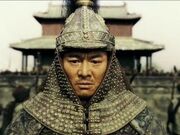
Cao Min, Supreme Commander of all Taiping Forces.
The Taiping Army was 130,000 men strong. But, despite it's numerical superiority, most of the men were peasants with little, if any, experience in fighting. However, 20,000 of Cao's troops were veterans of many battles and could be trusted to fight to the last man. The Taiping also had a limited number of cannons.
The Taiping army was led by Cao Min. A veteran commander, he was the military mastermind behind the early success of the Taiping Revolt. He won many battle from 1850 to 1857, but then he suffered many defeats, especially at the hands of General Ma. Cao was known to be an able commander, with talent in coordinating large number of troops.
The march to Anqing[]
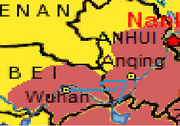
Ma's March.
Ma and his 67,000 men begun their march to Anqing in 3 September 1861. In 5 September, at the border between the Qing held Hubei province and the Taiping held Anhui province, the Qing forces crushed the 13,000 men of the Taiping Yellow Flag army and captured 10,000 prisoners, losing only 1,000 men.
After 6 days, Ma's army came 50 km close to Anqing, but Ma decided to stop because Chang Wen Hsiang felt that the army was moving too fast in rugged, making the supply of the Qing army an almost impossible task and would ensure destruction if Cao Min fortified in the city. Ma requested that Chan do something for this, and so the construction of the Wuhan-Anqing road begun in 11 September.
The Wuhan-Anqing road[]
Chang was given full command over the construction of the road. Chang's idea was to create a road, with military posts every 20 km, to connect Wuhan with the Qing army that was near Anqing, which would enable the supply of the Qing army. Chang conscripted 30,000 villagers and used them, and the 10,000 captured Taiping Yellow Flag soldiers, as slave labor to build the road. The men worked day and night and by 20 September, the road was complete. So, supplies could flow to the Qing forces. Two days later, Cao Min led his army outside Anqing and decided to meet Ma in an open battle.
Cao Min could have fortified in Anqing instead of meeting Ma in an open battle, but the fact that he had a huge army under his command but very few supplies, meant that after a few weeks, he would have to surrender because of lack of food. Cao also wanted a quick victory in an open battle to prove that he was not afraid of Ma, who had made quite a reputation of himself, and to increase the morale of his men, who were dispirited after their defeats by Ma.
The Battle[]
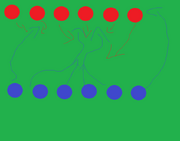
The battle begins. Blue is Qing and red Taiping.

The battle rages on.
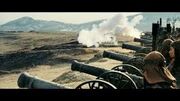
Taiping cannons fire.

The Qing forces come close to victory.
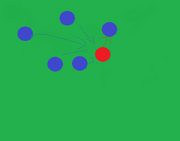

Taiping soldiers surrounded.
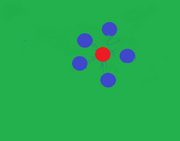
The end of battle.
The Battle begun with the Qing left wing, along with the Qing center, attacking the Taiping center. This left exposed the left wing of the Qing army to the Taiping left wing, but the Taiping failed to exploit Ma's mistake, which could have destroyed the Qing army and could have given the Taiping a great victory. Ma's plan was to use both his left and center to crush the enemy center with massive force. Meanwhile, the Qing right wing was send to outflank the Taiping right wing and attack the enemy from behind.
The Qing right wing managed to outflank the enemy forces and move behind them. Meanwhile the two opposing centers clashed in an all out battle. The Taiping managed to use their few cannons with great success, but an all out charge of 800 elite Qing forces, led by Huang, destroyed the majority of the Taiping cannons. But this heroic act killed 700 of those men and Huang was barely able to escape with his life.
The clashes between the two centers were very violent, with thousands of men losing their lives every second. Both sides made charges with swords against their opponents, when they were reloading their weapons, leading to both centers being on the verge of collapse many times, and being held together only by their respective inspirational commenders, Cao and Ma.
Meanwhile, the Qing left wing, now under the command of Chang himself, managed to destroy part of the enemy center, killing more than 5,000 men and losing 1,200 soldiers, and then turned to face the enemy left wing. At the same time, part of the Taiping right wing moved to outflank the Qing center. With the Qing right wing behind the enemy lines, there was nothing to stop the Taiping forces from outflanking the Qing.
After three hours of brutal fighting, Huang led an all out charge of 3,000 men on the center of the enemy center. This was coordinated with an attack of Qing soldiers behind the enemy lines on the same Taiping position. The 7,000 men who were fighting there collapsed and fled, creating a gap between the Taiping center, which Huang was able to exploit. Soon, the entire enemy center collapsed and all but 12,000 men remained, trapped by the Qing forces who quickly encircled them.
At the same time, the Qing left wing, under Chang, crushed the Taiping left wing. At first the fight there was a stalemate, but after Chang led himself a charge of 900 men against the enemy, the enemy lines collapsed. After the collapse of the Taiping left wing, Chang and his men moved against the remains of the Taiping center.
Meanwhile, the Taiping soldiers behind the Qing lines were able to attack Qing forces from behind, killing more than 4,000 men in a surprise attack that shaked the Qing forces and caused the collapse of an entire Qing corp. The attack came as a big surprise to the General Ma, who was quick to react and send units against the Taiping force.
At the same time the 12,000 men of the destroyed Taiping center, encircled by the Qing, were all massacred, despite pleas for mercy. This cruel act of General Ma was done, according to his account of the battle in his work "The War against the Taiping", in order to send a clear message that all who oppose him would have no mercy.
The Taiping forces that had attacked the Qing from behind, despite their early success, did not have the numbers to change the outcome of the battle and so they were quickly surrounded by the Qing forces. Ma did not accept their offer to surrender, and ordered his men to attack and show no mercy.
The Qing attack was very brutal, as thousands of soldiers charged with their swords against the Taiping riflemen, causing thousands of deaths. Despite this, Ma ordered more and more men to attack the enemy. Historians still argue why he made limited use of his riflemen, but some have claimed that this was to save ammunitions for the comming siege of Nanchang. The Qing forces were in the end victorious.
Legacy[]
The Battle of Anqing was one of the most bloody battles of Ma's campaign. It cost the lives of 19,000 Qing soldiers and 31,000 Taiping soldiers, a total of 50,000 deaths. The battle allowed Ma to take over the city of Anqing without a siege, as the few defenders surrendered. It also secured Ma's flanks for his campaign against Nanchang.
Ma made a few tactical mistakes in this battle, that could have led to a defeat. He himself admitted later, in his work "The War against the Taiping", that after his victories, he had become a bit over-confident. But the Taiping were unable to exploit those mistakes. Cao Min managed to outflank his enemy, but he was unable to show the same skill in his center, which collapsed. Cao Min, after this battle, retreated to Nanjing, where he tried to reorganize his remaining forces.